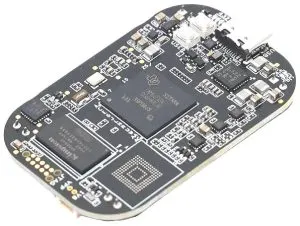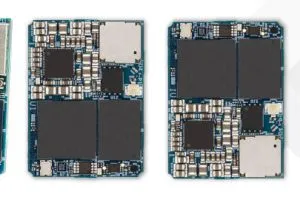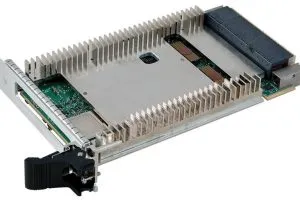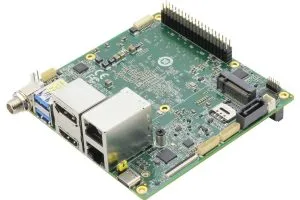
Initially built around Texas Instrument’s AM6232 IC, which has dual 64bit 1GHz Arm Cortex-A53 CPUs, the development board has been upgraded to TI’s AM6254, which has four of the same cores running at 1.4GHz, plus a 3D GPU that it did not have at the original launch.
The change happened between revisions A0 and A1 of the PCB. LPDDR4 remans the same at 512Mbyte.
Also on the main IC is a 400MHz single-core Cortex-M4F, and a sixth CPU can be found on another chip on the board – a 32MHz Cortex-M0 on a TI MSPM0L1105.
The boards measure 55 x 35mm (minus generous rounded corners) and two 2 x 18 expansion headers compatible with the organisations ‘Cape’ add-on board format.
Across the 72 header pins are spread power (5V 1A) and battery connections, USB, 8 analogue inputs, 52 digital I/Os and various digital peripherals. Power can also come through its USB C connector.
The original PocketBeagle (without the ‘2’) had a single 32bit Cortex-A8 main processor.
“Targeted at developers, students and hobbyists, PocketBeagle 2 retains the simplicity and flexibility of its predecessor while delivering enhanced performance and expanded features,” said BeagleBoard, makers of PocketBeagle. “Its small form factor and low power consumption make it a versatile platform for embedded development. PocketBeagle 2 is ideal for creating IoT devices, robotics projects and educational applications.”
Find PocketBeagle 2 on this BeagleBoard web page
A year ago, BeagleBoard announced BeagleY-AI, a 4Top/s development board for AI processing, shaped like a Raspberry Pi 5.
 Electronics Weekly
Electronics Weekly



